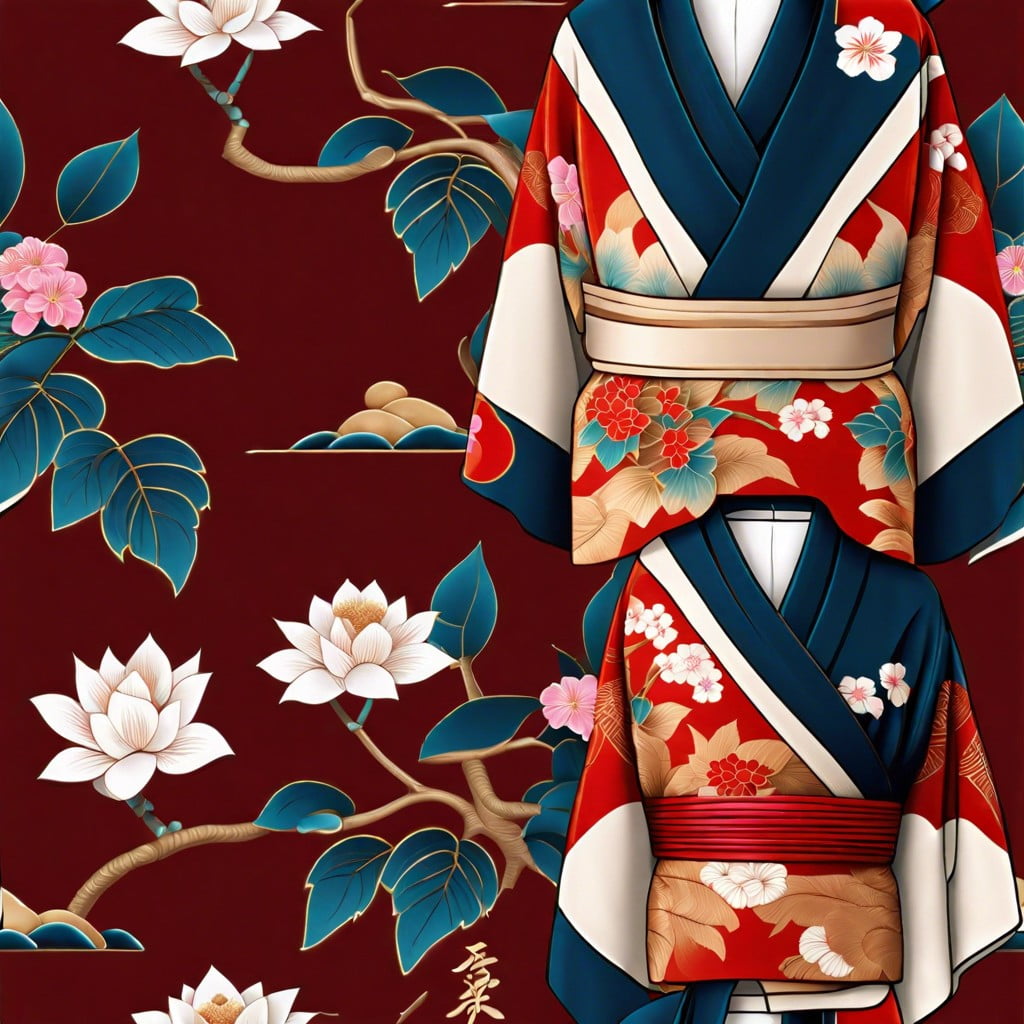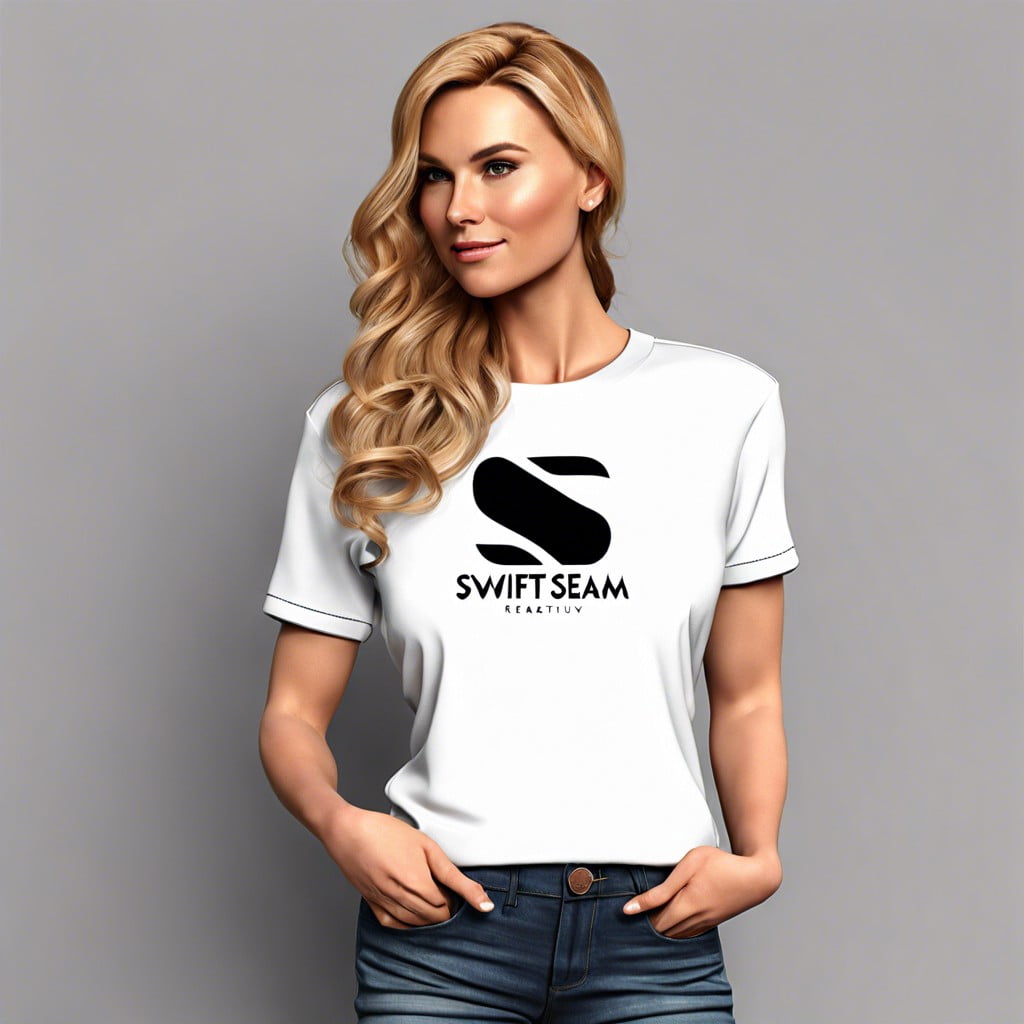Discover the key features to consider when selecting the ideal kimono wrap to elevate your wardrobe with understated elegance.
Key takeaways:
- Kimono wrap is a versatile and elegant wardrobe staple.
- Traditional kimonos are made from silk, modern designs use various materials.
- Style a kimono wrap with jeans, little black dress, or tailored trousers.
- Accessories like belts and jewelry can enhance the kimono wrap look.
- Follow care instructions to maintain the beauty and longevity of your kimono wrap.
Definition and Origins of Kimono Wrap

The kimono wrap finds its roots in Japanese culture, where the term ‘kimono’ traditionally refers to a full-length robe with wide sleeves. This garment, rich in history and symbolism, dates back to the Heian period (794-1185 AD). Its original form was a means to display artistry and social status through intricate designs and luxurious fabrics.
Contemporary iterations of the kimono wrap adapt the garment’s flowing silhouette, maintaining the open front and sash-tie closure. These modern adaptations are often less formal and use a variety of materials, allowing for casual wear and broader appeal. The term ‘kimono wrap’ specifically denotes a crossover style that embodies the elegance of its historic counterpart, yet is simplified for versatility and ease in today’s fashion landscape.
The essence of a kimono wrap is its relaxed fit and the ability to drape elegantly over the body, often providing an effortless way to elevate a look. Its versatility crosses cultural boundaries and has become a staple in wardrobes worldwide, reflecting a blend of traditional elegance and modern convenience.
Traditional Vs. Modern Interpretations
The traditional kimono wrap is deeply rooted in Japanese culture, often made from silk and displaying intricate patterns and colors, with each motif holding specific meanings. These wraps, reaching the ankle, were worn for different occasions and signified the wearer’s status.
In contrast, the modern kimono wrap embraces versatility and incorporates a variety of materials from cotton to satin. Contemporary designs vary in length, from thigh to floor-length, and often feature simpler patterns, solid colors, or even minimalist styles. Modern interpretations of the kimono wrap have transcended cultural boundaries and are worn as a statement piece in casual and formal settings alike.
Fashion designers have reimagined this garment to align with today’s trends, infusing it with elements like fringe, embroidery, or lace, to satisfy the aesthetic appeal of a global audience. The silhouette has been adapted for ease and comfort, catering to the western wardrobe by modifying the obi (traditional belt) with options like ties, buttons, or open fronts for effortless wearability.
While traditional kimonos require specific folding and tying techniques, modern wraps offer simplicity in wear without compromising elegance. They have become synonymous with fluidity and grace, providing a blend of the exotic and familiar to a diverse style palette.
How to Wear and Style a Kimono Wrap
Layer your kimono wrap over a simple tank top and jeans to elevate a casual ensemble, lending it an effortless, bohemian flair. Choose a belted style for a defined waistline, or let it hang loosely for a laid-back, flowy look.
Embrace versatility by transforming the kimono wrap into a chic beach cover-up. Its lightweight fabric and open-front design offer the perfect balance of modesty and style for seaside lounging.
Incorporate the kimono wrap into formal wear by selecting a silk or velvet option to drape over a little black dress. Opt for a piece with subtle embellishments or intricate patterns to complement evening attire.
Experiment with proportions by pairing a long kimono wrap with shorts or a mini skirt, creating a dynamic silhouette and a play on lengths.
For a professional setting, wear a tailored kimono wrap with trousers and a fitted top. A solid color or muted pattern maintains sophistication without sacrificing unique style.
Keep the look cohesive by matching the color palette of your outfit to the kimono wrap, or make a statement with a contrasting, vivid print.
Accessorizing With a Kimono Wrap
Elevate your ensemble with thoughtfully chosen accessories. Pair sleek belts or sashes with your kimono wrap to define your waist and add structure to your silhouette. Opt for minimalist jewelry, such as delicate necklaces or subtle earrings, to let the intricate patterns of the kimono shine without overwhelming the look.
When selecting footwear, consider the occasion and length of your kimono wrap. Flats and sandals impart a casual flair, perfect for daytime outings, while heels transition the piece to evening wear. A clutch or a simple, structured handbag can serve as the final touch, complementing the wrap without competing for attention.
For outdoor events, a wide-brimmed hat not only shields from the sun but also integrates a bohemian element to the outfit. Each accessory should be a piece that speaks to personal style while maintaining harmony with the kimono wrap’s quiet elegance.
Kimono Wrap Care Instructions
To maintain the integrity of your kimono wrap, gentle handling is imperative. Most traditional kimonos require dry cleaning, especially when made from silk or adorned with intricate embroidery. For modern fabrics, follow these guidelines:
1. Check the Label: Always refer to the care instructions on your garment’s label before proceeding.
2. Hand Washing: If machine washing is discouraged, opt for hand washing in cold water with a mild detergent. Gently swirl the kimono wrap in the water without wringing or twisting.
3. Machine Washing: Use a delicate cycle and place the wrap in a mesh laundry bag to prevent snags. Choose a gentle, fabric-appropriate detergent.
4. Drying: Avoid the tumble dryer. Instead, lay the wrap flat on a clean towel, roll it up to absorb excess water, then unroll and lay flat to dry completely. Never hang, as this may stretch the fabric.
5. Ironing: If needed, iron on a low heat setting or use a steamer, placing a cloth between the iron and the kimono wrap to shield it from direct heat.
6. Storage: Store the kimono wrap folded in a cool, dry place. Avoid hangers, which can cause the shoulders to stretch out and misshape the garment.
By adhering to these care instructions, your kimono wrap will retain its beauty and longevity, allowing you to enjoy its elegance for years to come.





